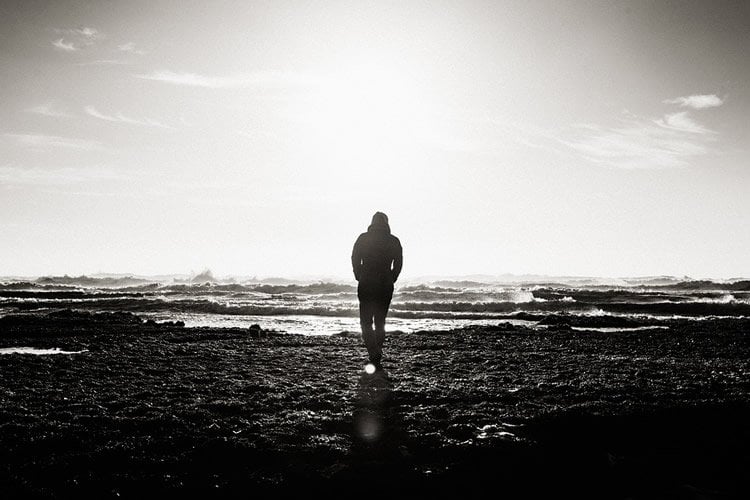Summary: A new study reports people perceive black men as bigger and more of a threat than white men of similar size. Researchers believe the findings may help explain why black men are more likely to be shot by police.
Source: American Psychological Association.
Findings could help explain why black men more likely to be shot by police, study says.
People have a tendency to perceive black men as larger and more threatening than similarly sized white men, according to research published by the American Psychological Association.
“Unarmed black men are disproportionately more likely to be shot and killed by police, and often these killings are accompanied by explanations that cite the physical size of the person shot,” said lead author John Paul Wilson, PhD, of Montclair State University.
“Our research suggests that these descriptions may reflect stereotypes of black males that do not seem to comport with reality.”
Wilson and his colleagues conducted a series of experiments involving more than 950 online participants (all from the United States) in which people were shown a series of color photographs of white and black male faces of individuals who were all of equal height and weight. The participants were then asked to estimate the height, weight, strength and overall muscularity of the men pictured.
“We found that these estimates were consistently biased. Participants judged the black men to be larger, stronger and more muscular than the white men, even though they were actually the same size,” said Wilson. “Participants also believed that the black men were more capable of causing harm in a hypothetical altercation and, troublingly, that police would be more justified in using force to subdue them, even if the men were unarmed.”
Even black participants displayed this bias, according to Wilson, but while they judged young black men to be more muscular than the young white men, they did not judge them to be more harmful or deserving of force.
In one experiment, where participants were shown identically sized bodies labeled either black or white, they were more likely to describe the black bodies as taller and heavier. In another, the size bias was most pronounced for the men whose facial features looked the most stereotypically black.

“We found that men with darker skin and more stereotypically black facial features tended to be most likely to elicit biased size perceptions, even though they were actually no larger than men with lighter skin and less stereotypical facial features,” said Wilson. “Thus, the size bias doesn’t rely just on a white versus black group boundary. It also varies within black men according to their facial features.”
Black men are disproportionately more likely to be killed in interactions with police, even when unarmed, according to Wilson, and this research suggests that misperceptions of black men’s size might be one contributor to police decisions to shoot. But, he cautioned, the studies do not simulate real-world threat scenarios like those facing actual police officers. More research should be conducted on whether and how this bias operates in potentially lethal situations and other real-world police interactions, Wilson said.
The research was published in the Journal of Personality and Social Psychology. Previous research, also published in this journal, suggested that people view black boys as older and less innocent than similarly aged white boys, and that training and experience can help police overcome racial bias in shoot-don’t shoot scenarios.
Source: John Wilson – American Psychological Association
Image Source: NeuroscienceNews.com image is in the public domain.
Original Research: Full open access research for “Racial Bias in Judgments of Physical Size and Formidability: From Size to Threat” by Wilson, John Paul; Hugenberg, Kurt; and Rule, Nicholas O. in Journal of Personality and Social Psychology. Published online March 13 2017 doi:10.1037/pspi0000092
[cbtabs][cbtab title=”MLA”]American Psychological Association “People See Black Men as Larger, More Threatening Than Same-Sized White Men.” NeuroscienceNews. NeuroscienceNews, 18 March 2017.
<https://neurosciencenews.com/racism-threat-size-6259/>.[/cbtab][cbtab title=”APA”]American Psychological Association (2017, March 18). People See Black Men as Larger, More Threatening Than Same-Sized White Men. NeuroscienceNew. Retrieved March 18, 2017 from https://neurosciencenews.com/racism-threat-size-6259/[/cbtab][cbtab title=”Chicago”]American Psychological Association “People See Black Men as Larger, More Threatening Than Same-Sized White Men.” https://neurosciencenews.com/racism-threat-size-6259/ (accessed March 18, 2017).[/cbtab][/cbtabs]
Abstract
Racial Bias in Judgments of Physical Size and Formidability: From Size to Threat
Black men tend to be stereotyped as threatening and, as a result, may be disproportionately targeted by police even when unarmed. Here, we found evidence that biased perceptions of young Black men’s physical size may play a role in this process. The results of 7 studies showed that people have a bias to perceive young Black men as bigger (taller, heavier, more muscular) and more physically threatening (stronger, more capable of harm) than young White men. Both bottom-up cues of racial prototypicality and top-down information about race supported these misperceptions. Furthermore, this racial bias persisted even among a target sample from whom upper-body strength was controlled (suggesting that racial differences in formidability judgments are a product of bias rather than accuracy). Biased formidability judgments in turn promoted participants’ justifications of hypothetical use of force against Black suspects of crime. Thus, perceivers appear to integrate multiple pieces of information to ultimately conclude that young Black men are more physically threatening than young White men, believing that they must therefore be controlled using more aggressive measures.
“Racial Bias in Judgments of Physical Size and Formidability: From Size to Threat” by Wilson, John Paul; Hugenberg, Kurt; and Rule, Nicholas O. in Journal of Personality and Social Psychology. Published online March 13 2017 doi:10.1037/pspi0000092






